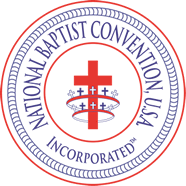Organizational Structure
The nature of this convention is defined by its ideal of voluntary membership and participation at both the organization and individual member levels. As such, the Convention does not prescribe nor exercise administrative or doctrinal control over any of its membership; these matters are left for the attention of local organization and church authorities. The strength of the Convention lies in its ability to harness and coordinate and network the resources and efforts of its membership to accomplish goals greater than those that could be accomplished in isolation. For this reason, the Convention has enjoyed the devoted participation and support of many churches and individuals throughout its history.
Board of Directors
The national Convention (Parent Body) is governed by its Board of Directors. The President is elected by the member churches every 5 years during the Annual Session. Matters of importance to the Convention are taken up and acted upon by the Board of Directors or designated subgroups thereof. The Board of Directors is comprised of a) the Officers; b) the presidents from each of the states and territories represented by Constituent Members of the Convention; (c) two (2) representatives from each of the boards and auxiliaries of the Convention; and (d) thirty-seven (37) members-at-large.
The Convention Officers include:
- President
- Vice President-at-Large
- Seven (7) Regional Vice Presidents
- General Secretary
- Four (4) Assistant Secretaries
- Treasurer
- Assistant Treasurer
- Statistician
- Historian
- Parliamentarian
State Conventions
There are approximately 64 State Baptist Conventions that have registered voluntarily with the Convention. The State Conventions are autonomous organizations, separately incorporated that voluntarily join the Convention. Each of the State Conventions is supported by the voluntary membership of churches, district associations, and individuals in the state that may or may not also hold membership in the national Convention. There may be multiple State Conventions in a single state, and the members of those Conventions are free to choose the national Convention with which they will affiliate (if any). The Presidents of the member State Conventions automatically hold a seat on the Board of Directors of the Convention. The State Conventions have similar missions to the Convention, and as such, hold their own educational and business meetings. In addition, the State Conventions may serve a role in organizing the District Associations in the state.
District Associations
There are approximately 341 District Associations that have registered with the Convention. These Districts may or may not hold membership in a member State Convention. Like the State Conventions, they are autonomous organizations, supported by the voluntary membership of churches and individuals, usually from a defined geographic region. Each District is headed by a Moderator, and sponsors local educational conferences, community projects and other events on behalf of its members.
Auxiliaries/Subsidiary Bodies of the Convention
There are eleven (11) recognized Auxiliaries/Subsidiary Bodies (Auxiliaries) that work in harmony with the Convention to contribute to the accomplishment of its mission, fulfillment of its needs, and attainment of its corporate purposes. These Auxiliaries may or may not be separately incorporated, and are governed by their own officers and in some cases, Boards of Directors. The Presidents/Executive Directors of the Auxiliaries are appointed by the President of the national Convention. The Auxiliaries, where feasible, have adopted the region organizational structure of the Convention, each headed by an Auxiliary Regional Vice President. The Auxiliaries of the Convention hold meetings & events, and conduct activities to support its mission.
Learn more about the Auxiliaries and Commissions.
Regional Organization Structure
The Convention coordinates the work done in the field using a regional system. Each of the seven (7) regions is headed by a Regional Vice President who serves on the Board of Directors. These regions are organized this way:
Northeast Region presently constituted by the following states and territories: Connecticut, Delaware, District of Columbia, Rhode Island, Maine, Maryland, Massachusetts, New Hampshire, New Jersey, New York, Pennsylvania and Vermont.
Southeast Region presently constituted by the following states and territories: Florida,Georgia, North Carolina, South Carolina, and Virginia.
Southwest Region presently constituted by the following states and territories: Alabama, Arkansas, Kentucky, Louisiana, Mississippi, Tennessee, and Texas.
Mid-West Region presently constituted by the following states and territories: Illinois, Indiana, Iowa, Michigan, Minnesota, Missouri, Ohio, West Virginia, and Wisconsin.
Western Region presently constituted by the following states and territories: Colorado, Kansas, Nebraska, New Mexico and Oklahoma.
Far West Region presently constituted by the following states and territories: Alaska, Arizona, California, Idaho, Nevada, Utah Washington and Wyoming.
International Region will constitute the following territories: Africa (mission congregations and posts), Bahamas, Caribbean, Central America and Europe
STATES NOT REPRESENTED:
Hawaii, Maine, Montana, North Dakota, Oregon, South Dakota and Vermont
